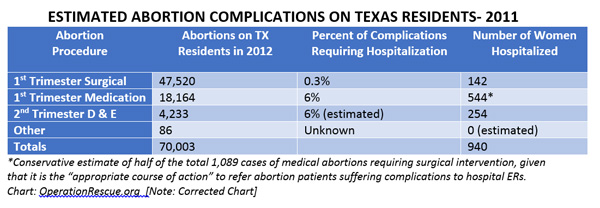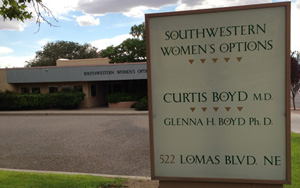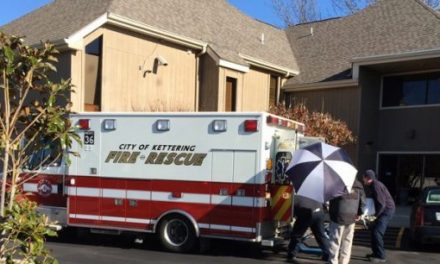By Cheryl Sullenger
 Austin, TX – A decision of the Fifth Circuit Court of Appeals allowing the State of Texas to enforce a controversial abortion law passed last year reveals that abortion complications that require emergency hospitalization are higher than thought, and raise the concerns that the true number of serious abortion-related injuries and maternal deaths are being kept from the public.
Austin, TX – A decision of the Fifth Circuit Court of Appeals allowing the State of Texas to enforce a controversial abortion law passed last year reveals that abortion complications that require emergency hospitalization are higher than thought, and raise the concerns that the true number of serious abortion-related injuries and maternal deaths are being kept from the public.
“Information in this decision has forced us to crunch the numbers,” said Troy Newman, President of Operation Rescue. “Our calculations based on conservative estimates indicates that nearly 1,000 women might very well be hospitalized each year in Texas alone. That number is completely unacceptable.”
The appeals decision issued on March 27, 2014, reveals troubling information that was submitted in the form of sworn testimony during a challenge to the constitutionality of HB 2, a sweeping abortion law that requires abortionists to maintain hospital privileges within 30 miles of their abortion clinics and follow protocols set by the U.S. Food and Drug Administration for administering the abortion pill, mifepristone, also known as RU-486.
According to the ruling:
During these proceedings, Planned Parenthood conceded that at least 210 women in Texas annually must be hospitalized after seeking an abortion. Witnesses for both sides further testified that some of the women who are hospitalized after an abortion have complications that require an Ob/Gyn specialist’s treatment.
That number was based on information provided by Planned Parenthood’s expert witness, abortionist Paul Fine, who serves as Medical Director of the organization’s mammoth Houston abortion clinic where Operation Rescue has documented three medical emergencies in the past year.
38-Year Old Complication Rate
Fine referred to studies that show “only 2.5 percent of women who have a first-trimester surgical abortion undergo minor complications while fewer than 0.3 percent experience a complication that requires hospitalization.” Calculations related to abortion patient hospitalizations were made from abortion numbers provided by the Texas Department of State Health Services (DSHS) showing that 70,003 abortions were done on Texas residents in 2011.
However, expert witness Dr. John Thorp told the court that the 0.3% hospitalization estimate “is based on data that is thirty-eight years old.” He also indicated that abortion complications are notoriously underreported and that only one-third to one-half of all abortion patients return for follow-up visits where complications could be reported to clinic staff.
In addition, in many states, abortionists are simply not required to report abortion complications. The underreporting means that the percentage of women actually suffering surgical abortion complications is much higher.
The number suggested by Planned Parenthood of “at least 210 women” who were hospitalized due to abortion complications was not based on any actual reporting. Instead, it appears to have been calculated using 2011 state abortion numbers with Fine’s 0.3% hospitalization rate, and assumes that all of the 70,003 abortions done on Texas residents in 2011 were first trimester surgical procedures, an assumption that is completely inaccurate.
Medication Abortions
Numbers obtained from the DSHS indicate that in 2011, 26 percent of all abortions on Texas women were done using the abortion pill. The court documents reveal testimony indicating that a full six percent of women who obtain medication abortions using the abortion pill require surgical abortions due to failure of the abortion pill process.
Based on those numbers, there would actually have been approximately 1,089 cases where women required surgical intervention following medication abortions.
Hospital Referral Policy
How many of those were actually hospitalized? Additional testimony in the Appeals Court decision gives some indication that the numbers could be in the hundreds.
The ruling revealed that many Texas abortionists “have virtually no history of hospital admissions since the experts presented by the plaintiffs argued that it is the practice of many abortion physicians to instruct their patients to seek care from an emergency room if complications arise.”
Planned Parenthood’s abortionist Fine even testified that “the appropriate course of action” in the event of abortion-related complications “would be to refer the woman to a nearby emergency room.”
In view of this policy, if a conservative estimate of just 50% of Texas women suffering from medication abortion complications requiring surgical intervention went to the hospital for treatment instead of the abortion clinic, it would represent 544 women.
Riskier Second Trimester D & E
Also, second trimester Dilation and Evacuation abortions that have higher risk factors were done on 4,233 Texas women. While hospitalization figures for these women were not discussed in the court documents, if we conservatively estimate that the percentage of women hospitalized due to complications from these riskier abortions is six percent, the number of women hospitalized would be at least 254.
In total, an estimate of the number of Texas women hospitalized due to abortion complications would be closer to 1,000, even using the abortion industry’s “low-ball” figure of 0.3% complication rate for first trimester surgical abortions and very conservative second trimester estimates.

Disingenuous Attribution of Complications
To make matters worse, complications experienced by women who report directly to emergency rooms are not attributable as a complication for any particular abortion provider. Thus, the abortionist appears to the public as having a better safety record than he actually does.
Maternal Deaths Concealed
While the vital statistics kept by the DSHS indicated no women died in Texas in 2011 from abortion-related complications, there is reason to believe that abortion clinics are simply not reporting deaths of women who are pronounced dead at local hospitals.
“Suppose a woman suffered a fatal abortion complication at a Texas abortion clinic. If the clinic called for emergency medical assistance and the patient was transported to a nearby hospital where she was pronounced dead, the abortion clinic would not report that death as one that occurred at the abortion clinic,” said Newman. “That’s exactly how abortion deaths get covered up and swept under the rug.”
Statistics on abortion-related maternal deaths remain unreliable due to this practice, which is common throughout the U.S., and due to the fact that often, the deaths are classified as something other than abortion related.
In fact, most incidents of abortion death are only made public when pro-life activists happen to be on site at abortion clinics when ambulances are called.
Such was the case with 2005 death of Christin Gilbert in Wichita, Kansas; the 2013 death of Jennifer Morbelli in Germantown, Maryland; and the death of Lakisha Wilson in Cleveland, Ohio, just last month.
Other known deaths from abortions have only been discovered when pro-life activists research documents such as clinic inspection reports, as in the 2013 case of Maria Santiago, who died at a Baltimore “clinic” owned by the notorious Steven Chase Brigham, which was located in a residential condominium.
“It is likely that women are dying from abortions obtained at Texas abortion clinics, but that those incidents will never be made public because the deaths were attributed to the hospital or some other cause of death – such as cardiac arrest, for instance,” said Newman. “It’s true that people die when their hearts stop, but what isn’t mentioned in many cases involving abortion is the part abortion played in causing the hearts to stop.”
Tens of Thousands
If we apply the information about abortion complications found in the Texas court records to the rest of the country, it is likely that tens of thousands of women are landing in hospital emergency rooms yearly unbeknownst to the public.
Overall in the U.S., there is a dangerous lack of current, accurate data on abortion numbers, complications, hospitalizations and deaths that lead to rough “guesstimates” based on dubious numbers that are decades old. This contributes to an inaccurate picture of abortion safety in America, as the recent Fifth Circuit Court of Appeals decision shows.
Operation Rescue calls for states to continue to pass local hospital privilege requirements to protect women from shoddy abortion practices. In addition, states need to pass laws that require detailed reporting regarding abortion complications that will ensure such complications are not misattributed to hospitals where botched abortion patients are ultimately treated.
“The court found that requiring hospital privileges for abortionists within 30 miles of their abortion businesses means that women will actually be safer because hospitals require standards that weed out the most dangerous and incompetent abortionists,” said Newman. “The truth is that thousands of women in this country every year suffer needlessly from abortion complications because states do not require abortionists to meet standards required to ensure patient safety. The information in the Fifth Circuit Court of Appeals ruling is a wake-up call to every state. Requiring local hospital privileges is a way to protect women and save lives until such time as the practice of abortion can be completely abolished. This requirement should be passed in every state.”
View the Fifth Circuit Court of Appeals Decision No. 13-51008






